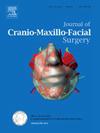Family strategy for nasoalveolar molding in infants with unilateral complete cleft lip and palate
IF 2.1
2区 医学
Q2 DENTISTRY, ORAL SURGERY & MEDICINE
引用次数: 0
Abstract
Background
The aim of the study was to demonstrate the therapeutic outcomes after a family strategy for nasoalveolar molding (Family-NAM) in infants with unilateral complete cleft lip and palate.
Methods
Forty patients with unilateral complete cleft lip and palate were categorized into two groups: the group in which the Family-NAM was used and the control group without Family-NAM. The Family-NAM was applied seven days after birth until primary rhinoplasty, while the 3-D alveolar molding plates were applied until primary palatoplasty. Six parameters were measured to evaluate nasal symmetry, and palatal measurements were applied to evaluate the cleft palate size and morphology.
Results
Before the primary surgical correction, the application of Family-NAM can significantly improve the preoperative nasal morphology. Patients with Family-NAM showed better nasal symmetry at 6-12-month post-operative follow-up compared with the control group. Compared to the control group, the Family-NAM group showed a significantly narrower cleft gap before primary cleft rhinoplasty and before primary palatoplasty.
Conclusion
The Family-NAM can effectively reduce the severity of preoperative clefts and improve the degree of asymmetry and postoperative nasal morphology. It is convenient for infant caregivers by avoiding frequent visits, minimizing complications, and simplifying the courses of preoperative molding treatment.
单侧完全性唇腭裂婴儿鼻肺泡成形的家庭策略。
背景:本研究的目的是为了证明单侧完全性唇腭裂婴儿鼻肺泡成型(family - nam)家庭策略后的治疗效果。方法:将40例单侧完全性唇腭裂患者分为两组:应用Family-NAM组和不应用Family-NAM组。Family-NAM在出生后第7天使用,直到初次鼻成形术,而三维牙槽成型板在初次腭成形术中使用。测量6个参数来评估鼻对称性,腭测量用于评估腭裂的大小和形态。结果:在初次手术矫正前,应用Family-NAM可显著改善术前鼻形态。在术后6-12个月的随访中,Family-NAM患者的鼻对称性优于对照组。与对照组相比,Family-NAM组在初次腭裂鼻成形术前和初次腭裂成形术前的腭裂间隙明显缩小。结论:Family-NAM可有效降低术前唇裂严重程度,改善术后鼻部形态不对称程度。避免了频繁的就诊,减少了并发症,简化了术前成型治疗的过程,方便了婴儿护理人员。
本文章由计算机程序翻译,如有差异,请以英文原文为准。
求助全文
约1分钟内获得全文
求助全文
来源期刊
CiteScore
5.20
自引率
22.60%
发文量
117
审稿时长
70 days
期刊介绍:
The Journal of Cranio-Maxillofacial Surgery publishes articles covering all aspects of surgery of the head, face and jaw. Specific topics covered recently have included:
• Distraction osteogenesis
• Synthetic bone substitutes
• Fibroblast growth factors
• Fetal wound healing
• Skull base surgery
• Computer-assisted surgery
• Vascularized bone grafts

 求助内容:
求助内容: 应助结果提醒方式:
应助结果提醒方式:


